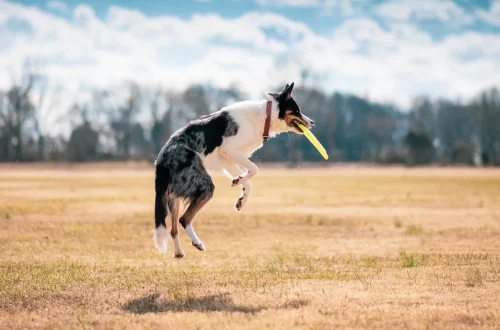
Understanding the Bengal Cat Tabby: Unique Traits and Care Tips
The Bengal cat is a captivating breed that has captured the hearts of many cat enthusiasts. Known for their striking appearance, these cats exhibit a unique blend of wild ancestry and domestic charm. As a hybrid breed, Bengals are a cross between domestic cats and the Asian leopard cat, which contributes to their distinctive spotted or marbled coat. Their appearance is not the only remarkable aspect; they also possess an engaging personality that combines playfulness with intelligence.
Bengal cats are often described as having a dog-like demeanor. They are highly active, curious, and require stimulation, making them ideal companions for individuals or families who can provide the attention they crave. Their energetic nature means that they thrive in environments where they can explore and play. However, their unique needs also necessitate specific care and attention to ensure they remain healthy and happy.
Understanding the Bengal cat, especially the tabby variety, involves delving into their physical characteristics, personality traits, and care requirements. This breed’s tabby pattern adds an extra layer of complexity to their already fascinating nature. As we explore the unique traits of Bengal cats and tabby patterns, we will also provide essential care tips that will help you nurture your feline friend effectively.
Physical Characteristics of Bengal Cats
Bengal cats are often recognized for their striking appearance, which sets them apart from other domestic breeds. Their coats are perhaps the most eye-catching feature, characterized by a luxurious, soft texture that feels almost like silk. The tabby pattern, distinguished by its unique markings, can come in various types, including classic, spotted, and marbled. Each Bengal cat displays a unique pattern, which adds to their individuality.
One of the standout features of the Bengal breed is their athletic build. These cats are muscular and well-proportioned, giving them a powerful appearance. They are typically medium to large in size, with males generally weighing between 10 to 15 pounds and females slightly smaller. Their long, agile bodies and strong legs make them excellent climbers and jumpers, often seen leaping to great heights in search of adventure.
The eyes of a Bengal cat are another defining characteristic. They often have a striking almond shape and can come in a variety of colors, including green, gold, and blue. The contrast between their vivid eyes and their beautifully patterned coat creates a mesmerizing look that many find irresistible. Their ears are also distinctive, being small and slightly rounded, which adds to their exotic appearance.
Bengal cats are known for their unique coat care requirements. Regular grooming is essential to keep their fur looking its best and to minimize shedding. Their coats are less prone to matting compared to long-haired breeds, but they do benefit from occasional brushing to remove loose hair and distribute natural oils. Maintaining their coat also helps to reduce the risk of skin issues, which can be more prevalent in breeds with specific coat types.
In summary, the physical characteristics of Bengal cats, particularly those with tabby patterns, highlight their exotic heritage and unique beauty. Understanding these features is vital for potential owners, as it sets the stage for the special care and attention these cats require.
Understanding Bengal Cat Behavior
The Bengal cat’s behavior is as fascinating as its appearance. These cats are known for their playful and energetic nature. They thrive on interactive play and mental stimulation, often engaging in activities that mimic hunting behaviors. This breed is highly intelligent and can learn tricks and commands, making them more akin to dogs than traditional cats.
Bengals are social creatures that enjoy the company of their human companions and other pets. They are often described as being affectionate and can form strong bonds with their families. However, their social nature also means they can suffer from separation anxiety if left alone for extended periods. It is essential for Bengal owners to provide plenty of interaction and engagement, whether through playtime or companionship.
One notable trait of Bengal cats is their curiosity. They are natural explorers and may be found investigating every nook and cranny of their environment. This inquisitiveness can lead them to engage in mischievous behaviors, such as knocking over objects or opening cabinets. Providing a stimulating environment with plenty of toys, climbing structures, and interactive games can help channel their energy in positive ways.
Additionally, Bengals are known for their vocalizations. They tend to be more vocal than other breeds, often expressing their needs and desires through a range of sounds. This communicative nature can be endearing, but it also means that owners should be attentive to their cats’ vocal cues to understand what they may need.
In conclusion, understanding the behavior of Bengal cats is crucial for potential owners. Their playful, inquisitive, and social nature requires a commitment to active engagement and companionship. By recognizing these traits, you can create a fulfilling environment that caters to their unique needs, ensuring a happy and healthy life for your Bengal.
Care Tips for Bengal Cats
Caring for a Bengal cat, especially a tabby, involves several essential practices that ensure their health and well-being. Given their unique characteristics, Bengal cats require specialized care that differs from that of other domestic breeds. Here are some key care tips to keep your Bengal happy and healthy.
Firstly, nutrition plays a critical role in the overall health of your Bengal cat. A high-quality, protein-rich diet is essential to support their active lifestyle. Look for cat food that lists meat as the primary ingredient and is free from fillers like corn and soy. Consulting with a veterinarian can help determine the best dietary plan tailored to your cat’s specific needs, taking into account their age, weight, and level of activity.
Regular veterinary check-ups are also crucial for monitoring your Bengal’s health. Routine vaccinations, dental care, and parasite prevention are important aspects of keeping your cat healthy. Bengals can be prone to certain genetic health issues, so having a vet familiar with the breed can ensure any potential problems are addressed early.
Another important aspect of care is providing plenty of enrichment and exercise. Bengals are energetic cats that require regular physical activity to prevent boredom and associated behavioral issues. Interactive toys, puzzle feeders, and climbing trees can help keep them engaged. Consider setting aside time each day for play, allowing them to expend energy through interactive games that simulate hunting.
Moreover, grooming is essential for maintaining your Bengal’s coat and skin health. Regular brushing will help reduce shedding and prevent hairballs. While their coats are generally low-maintenance, occasional baths may be necessary to keep their fur clean and healthy. Additionally, regular nail trimming and ear cleaning should be part of your grooming routine.
Finally, providing a safe and stimulating environment is vital. Bengals are natural explorers, so creating a cat-friendly space with plenty of vertical climbing options and safe play areas can help satisfy their curiosity. Be mindful of household hazards, such as toxic plants and small objects that could be swallowed.
In summary, caring for a Bengal cat requires attention to their unique nutritional, health, and environmental needs. By providing a balanced diet, regular veterinary care, and ample opportunities for exercise and exploration, you can help ensure your Bengal cat lives a healthy and fulfilling life.
This article is intended for informational purposes only and does not constitute medical advice. If you have health concerns regarding your pet, please consult a veterinarian for professional guidance.




